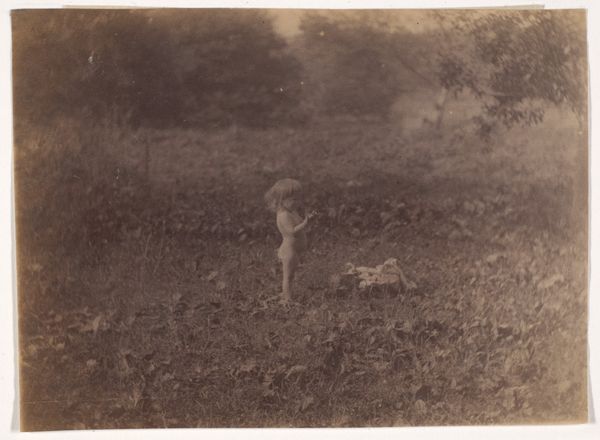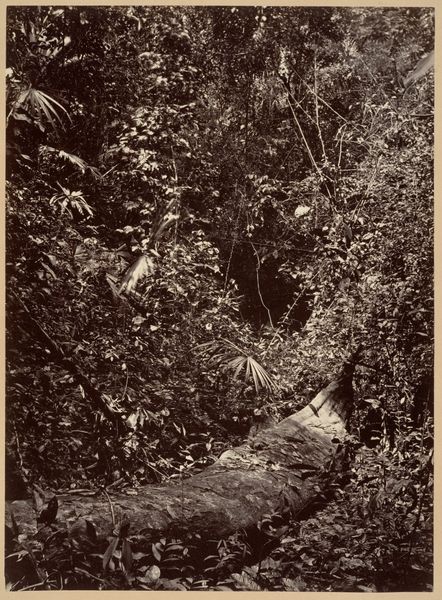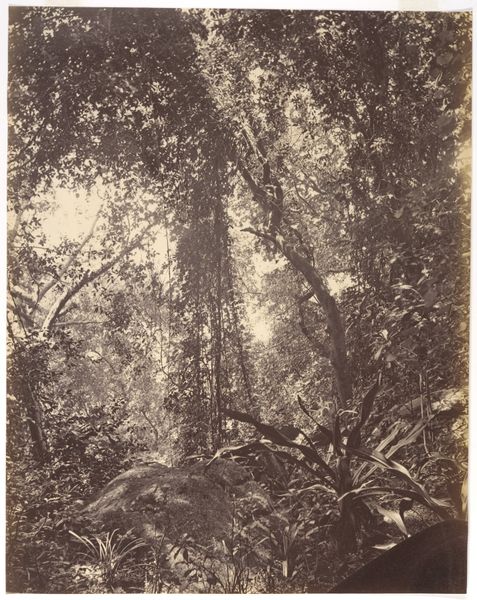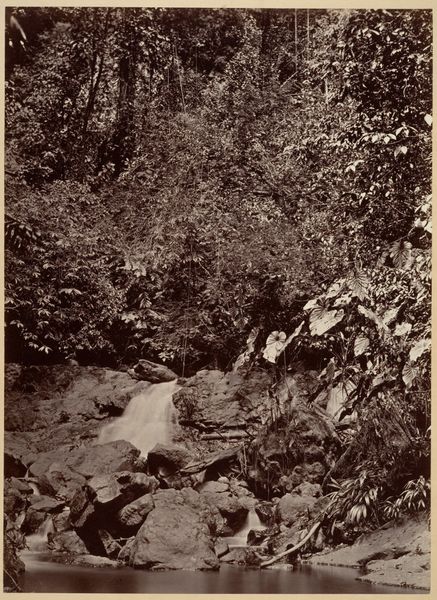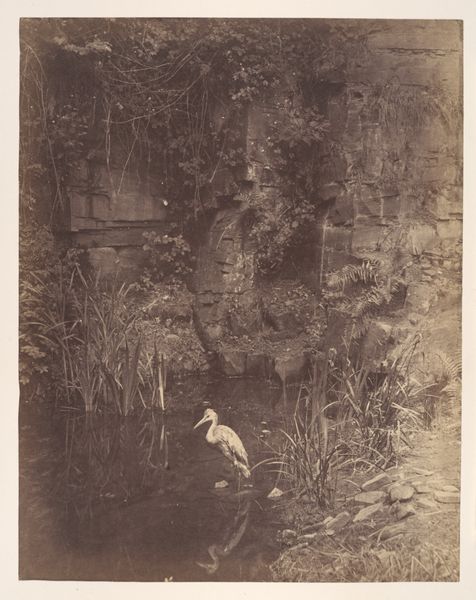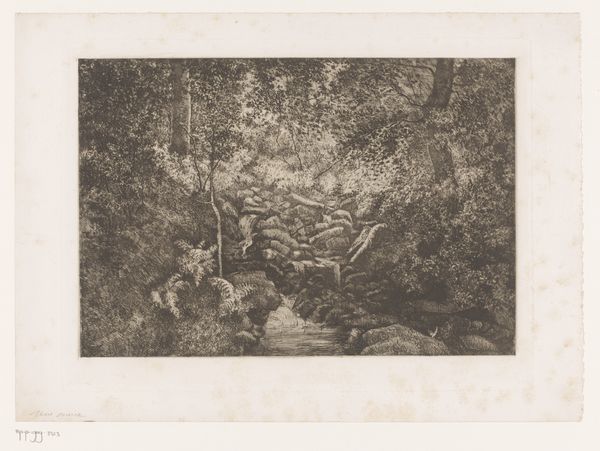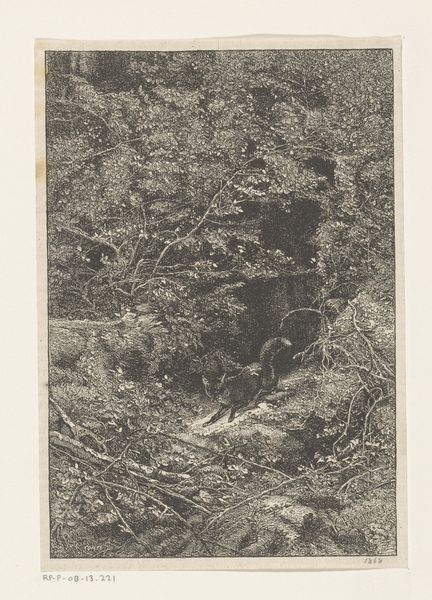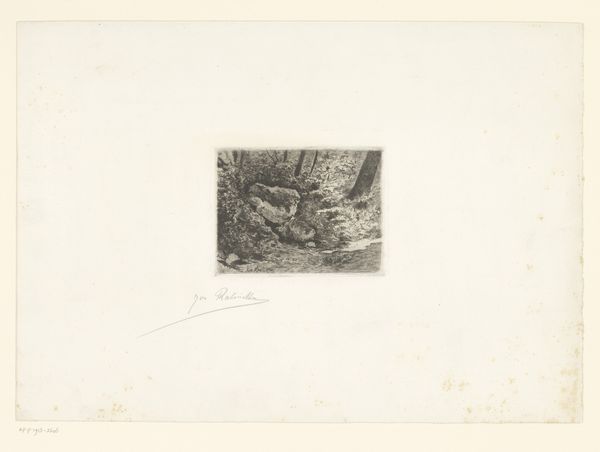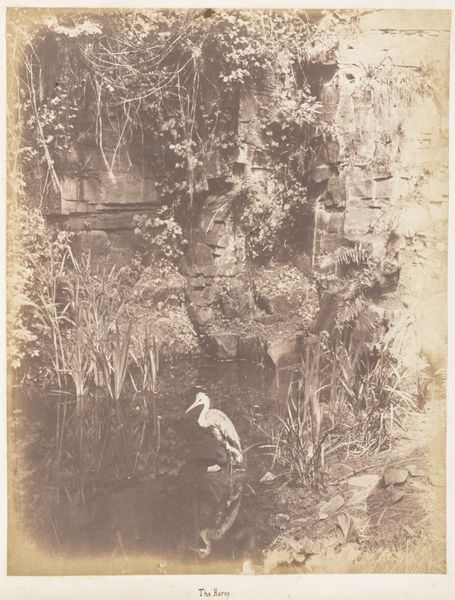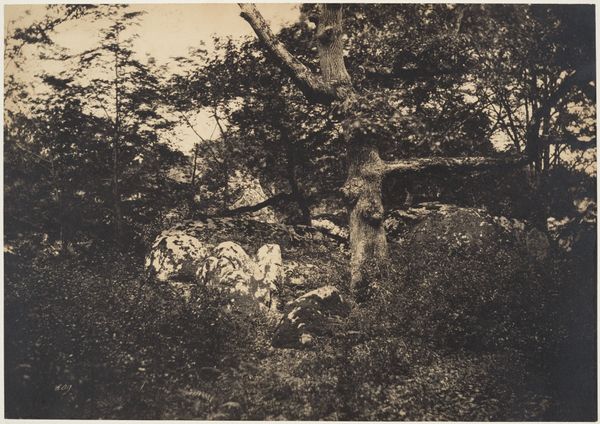
Dimensions: height 219 mm, width 276 mm, height 274 mm, width 377 mm
Copyright: Rijks Museum: Open Domain
Curator: Welcome! Let’s turn our attention to this intriguing gelatin silver print entitled “Planten en andere begroeiing nabij Loch Goil in Schotland,” placing it somewhere between 1855 and 1890 and crediting W. Church as its author. Editor: The density of the image strikes me first. How all the details crowd the foreground; stones and undergrowth pushing forward almost into our own space. A tight composition that focuses all its energies on a limited space. Curator: It definitely confines the eye. And yes, there's an abundance here that resonates with Romantic notions of nature—overwhelming in its detail, abundant and hinting at hidden depths beyond immediate comprehension. Editor: Absolutely, the photograph hints towards ideas about the picturesque but what are your views about the cultural importance that the artist wanted to portray? Curator: These landscapes often tapped into a deep well of national identity, linking the land with notions of freedom, resilience, and the sublime. It can evoke feelings of connection and pride within a Scottish and wider British cultural narrative. Editor: I think the realism in this print is quite impactful. Note how each fern frond is delicately rendered, how textures interlock. And it suggests not just realism, but almost hyperrealism—an amplified awareness. Curator: Quite. Consider this photograph as part of the Pictorialist movement—a movement striving to legitimize photography as fine art. A landscape serves as a symbol here, acting as more than merely a pretty vista, but as a reflection of human spirit. The artist invites the viewer to not merely see but contemplate and feel. Editor: The interplay between darkness and light throughout the image amplifies this notion of visual weight and depth and brings back that earlier sentiment on romanticizing the sublime. Curator: Precisely. The choice of the monochromatic palette amplifies its timelessness and archetypal qualities—a connection to historical memory is solidified through that limited tonal range. Editor: Fascinating, seeing how what appeared as an intimate exploration can also hold layers of broader meaning! Curator: Indeed. Every aspect contributes to a broader understanding of culture and selfhood that remains enduring even today.
Comments
No comments
Be the first to comment and join the conversation on the ultimate creative platform.
